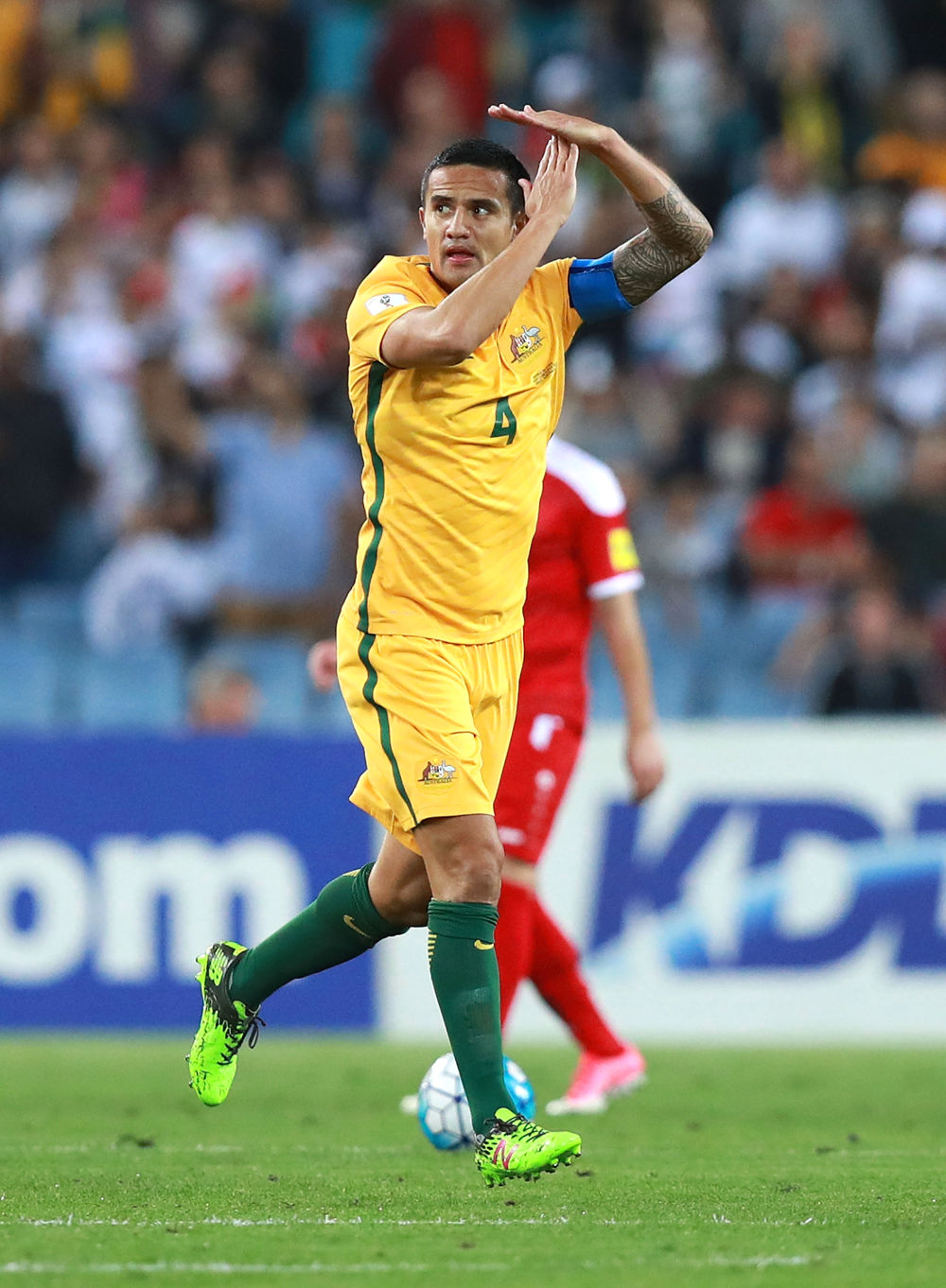Eight of the top ten goalscorers in the A-League this season are foreign imports. Most are either bonafide, outside-the-cap marquees or – in the case of Adrian Mierzejewski – marquee-calibre players.
The only two Australians in the group are the two Jets, Andrew Nabbout and Dimi Petratos, neither of whom are strikers.
The highest placed Australian out-and-out striker – if we consider Dario Vidosic to be a combo-attacker – is George Blackwood. He has scored five goals in 18 games so far this term.
It’s been clear for some time that A-League teams are looking to foreign imports to provide – if not the vast majority – a considerable portion of their goals.
Roy O’Donovan, Oriel Riera, Bobo, Massimo Maccarone, and Ross McCormack have all been brought in as starting strikers over the last three years. Besart Berisha has been a leading goal-snipe since 2011. Marc Janko starred in a single season for Sydney. Most of us can still see, receding over the horizon behind us, the days of Emile Heskey.
The list of imported strikers who’ve flopped – Federico Piovaccari anyone? – stretches on like a Big W receipt, and like said receipt has been stuffed hastily into some crevasse inside the door of the car and forgotten about.
Naturally, the paucity of Australian strikers is a conversation that has been rumbling on for some time at national team level, with the prolonged reliance on Tim Cahill, and the lack of a clear successor the tent-pole of the debate.

Tim Cahill (Photo by Ryan Pierse/Getty Images)
A year ago, I poked around for some alternative striking options that were hiding a little out of sight.
Last season, Jamie Maclaren finished equal-first in the Golden Boot race, and Adam Taggart and Brendan Santalab weren’t too far behind. Cahill was playing regularly for Melbourne City, and there were some promising young strikers dotted around the league – Trent Buhagiar at Central Coast, or Lachie Scott at the Wanderers, for instance. Perhaps, some thought, Bruce Kamau might be converted into a potent goalscorer in the seasons to come, or Jaushua Sotirio.
It was a situation that, although clearly not ideal, was healthy enough to stoke hope that things could improve.
Since then, Maclaren and Cahill have left the A-League, Santalab has fallen out of the Wanderers’ attacking rotation, and Taggart has largely spent the season injured.
As for the youngsters, Sotirio has played 333 minutes for the Wanderers this season, Scott has played fewer than that, and Buhagiar has, according to Fox Sports, registered just one single shot on target for the Mariners.
Meanwhile, Maclaren has been bounced around from Germany to Scotland on loan, and Cahill is presently justifying his inactivity in Millwall by saying the club’s “professional environment” is more important than actual playing time, which is perfect because he’s played 16 minutes of league football for super Millwall since moving there.
There are contextual reasons why young, local strikers don’t get much of a run in the A-League. It is still a veteran’s league; Sydney have been utterly dominant with one of the oldest squads. It is still a physical league, with young, flimsy limbs crunched by gnarled veteran elbows; the kind of physical nous and sinewy resilience needed to survive the beside Michael Jakobsen or James Donachie can only come with experience.
The aspects that make Bobo the league’s best striker – poise, body control, timing, cunning, and, above all, finishing – are all qualities that cannot just be emulated by a green-horned prospect, save for some generational wunderkind. A lot of teams need these qualities now, ready-made, and don’t have time to nurture them.

Bobo (AAP Image/David Moir)
Goals are the hard currency of football, so it makes sense for clubs to spend their precious cap room or marquee slots on players that will score them. You are still probably more likely to strike gold with a foreign import than you are by persevering with a young product.
This isn’t to say scoring is the only way strikers can contribute to their team’s success – we saw in the Sydney Derby how valuable, if slightly unbecoming, Matt Simon’s unique brand of psycho-strike-o play was to the Sky Blues’ victory, even though he rarely threatened to actually score himself.
Still, at best, these contributions are only supplementary.
Both our hard, fast pitches, and the relative lack of considered, capable passers in the league no doubt makes raw strikers look worse than they might be with better service. How many potential young strikers are we losing to the wings, where the ball circulates with more space and time, where Daniel Arzani-style dribblers create tweet-able GIFS with every step-over, every bamboozled opponent?
How much of this is due to a lack of inspiration? It feels like we’ve always had great goalkeepers to prompt youngsters into dreaming blissfully of becoming the next Mark Bosnich, Mark Schwarzer or Mat Ryan, but how many youngsters remember Mark Viduka?
It seems as though the days of Cahill scoring majestic winners for the Socceroos are coming to a rather bitter end, so where is the next striker’s idol who will take his place? Are we just going through an extended bare patch, or has our domestic system been shaped in such a way that dissuades not just players from becoming strikers, but from clubs supporting the few that do?
Obviously, this piece isn’t meant as some ruddy rally cry against foreign players; Bobo, Berisha and the rest have improved the league immeasurably, have become vital parts of it, and I have treasured the wonderful goals they’ve given us.
But it shouldn’t stop us from analysing the effects – both positive and negative – that they have had on the recruitment tendencies clubs now follow, tendencies in large part justified by their success.































































































